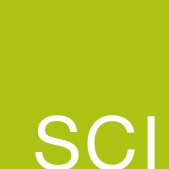#SCI50th: SCI Established
- Friday August 28 2020
- 50th Anniversary
#SCI50th: As we celebrate 50 years of inspiration and impact at the Science Center of Iowa, we are sharing stories and memories of how SCI was established, grew and continues to serve the next generation. View the timeline and stories at www.sciowa.org/50th
“Prior to that science was all book learning. We didn’t try ideas out, but this showed that anybody can be a scientist if you’re willing to test and try and think outside of the box.”
A little before 1960, members of the Junior League of Des Moines started hearing about a trend that was sweeping the nation.
Big cities all around were building science centers. Unlike museums, these centers focused on teaching people of all ages about science through hands-on learning.
It wasn’t until 1966, though, that the Des Moines Center of Science and Industry was officially founded.
Around the same time, the Junior League of Des Moines voted to accept the project as one of its major initiatives and Katie Meredith became the main fundraiser for the project. Within its first year, $500,000 was raised for the center and the Junior League attempted to buy five acres of space at Union Park, just north of downtown.
There appeared to be wide agreement that the science center was a welcome addition to the community (– but where to build was up for debate. Objections to using five acres on the south end of Union Park from nearby homeowners prompted that plan to be abandoned.
Then, in 1967, the center considered a wooded track of land at Prospect and Hickman roads, which was east of the Broadlawns hospital.
A spot was finally found in Greenwood-Ashworth Park.
Judy Miller, a member of the Junior League at the time, recalls about 70 women voting to purchase the land at Greenwood Park. A groundbreaking ceremony was held June 1969 for the $1 million facility.
The Des Moines Center of Science and Industry became one of the first interactive science centers in the world when its doors opened on October 17, 1970.
"We were trying to bring science not just to kids, but to anybody, and at a level they could see the challenge and the fun of it and want to do more," Miller said. "Prior to that, science was all book learning. We didn't try ideas out. But this showed that anybody can be a scientist if you’re willing to test and try and think outside of the box."
The new building at Greenwood Park included a 125-seat planetarium, hands-on exhibits and programs and a 41-foot long Foucault Pendulum. The brass pendulum demonstrates the rotation of the Earth and is featured at the science center to this day.
The building was paid for by private donations and run by a director, an assistant director, two clerks and a team of volunteers.
More than 40 volunteers were on hand to answer questions from the public on the day the center opened. Opening exhibits included a display of about three centuries of scientific innovation from da Vinci's "flying machines" to lights that tracked the 20th century's expedition to the moon.
Those volunteers went on to build exhibits, write programming scripts, perform demonstrations, think of new ways to attract visitors, raise money and even clean the building.
A volunteer and contracted exhibit builder at the time, Jon Turner, said the building started to model itself on the Exploratorium in San Francisco. The Exploratorium was owned by the brothers Oppenheimer, known for their work on the Manhattan Project during World War II.
"Everything in the entire place was something you could interact with, something you would push or pull on," Turner said. "Their mantra was let's build this as cheaply and as efficiently as we can. We don't need a lot of floss or a lot of big signage, all that we want is for people to come in and understand the science."
Turner went on to build more than 200 exhibits at the science center, ranging from big exhibits featuring animatronic dinosaurs to smaller exhibits where kids raced cars of varying weights to learn about gravity.
The science center was initially free to the public, and the planetarium cost $1 for adults and 50 cents for children. More than 50,000 visitors walked through the science center’s door in its first year of operation.
By 1975, the science center grew to have more than six full-time and 13 part-time employees. Volunteers clocked 5,100 hours.
By this time, science centers began popping up around the nation, and it was those centers that encouraged schools to adapt hands-on learning curriculums.
A lot of science happened at SCI’s Greenwood Park building. Robotic dinosaurs were built. The Challenger Learning Center showed visitors what it was like to go to space.
William Shatner visited, as did Iowa astronaut Peggy Whitson.
Visitors enjoyed laser shows and learned about physics and engineering and astronomy.
"It was amazing," Turner said. "Like 200,000 people or something went to the place. And on Saturday nights, it would be all hands on deck. We would sell out of gift shop stuff and every program we hosted."
The science center was so much fun that there were eventually so many visitors it was hard to fit everyone into such a small space. So, in the early 2000s, the science center faced its biggest challenge yet.
It was time to move.
